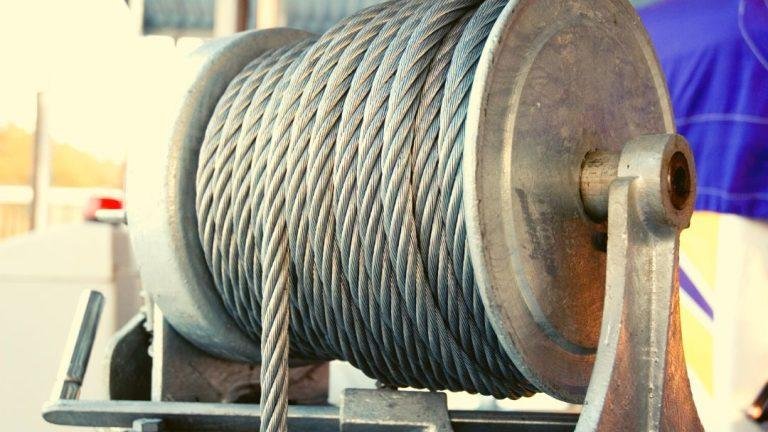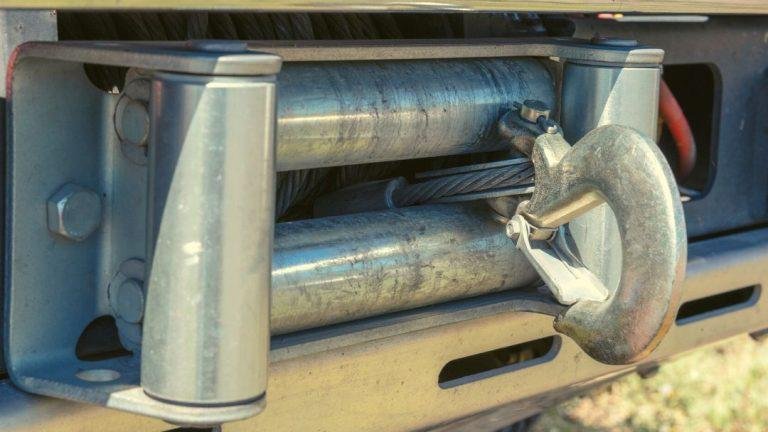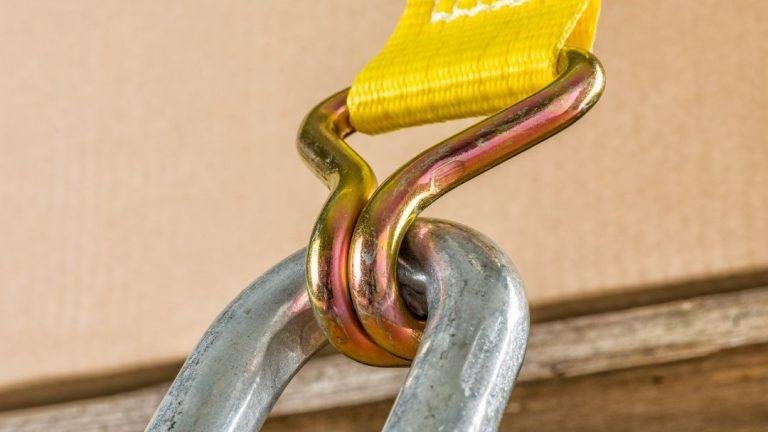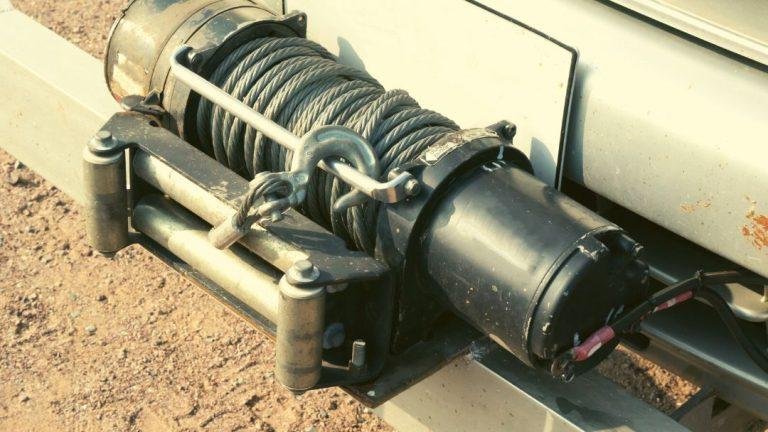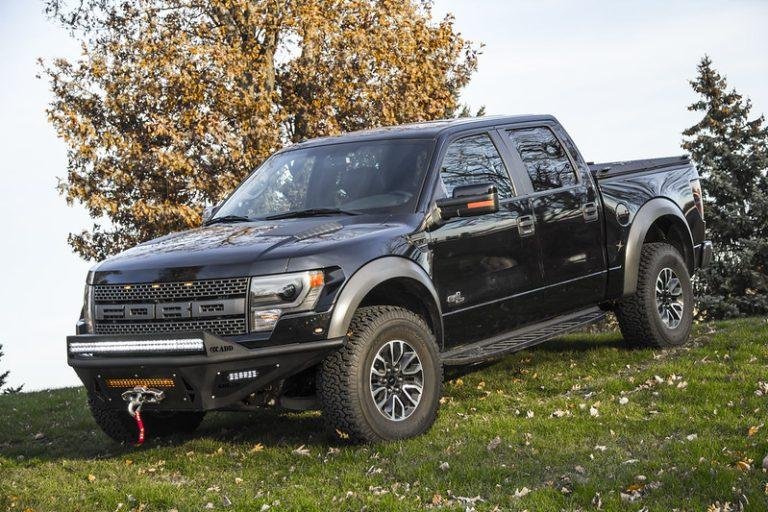To cut winch cable, use wire cutters or a hacksaw to carefully sever the cable. The process involves cutting through the individual strands until the cable is completely severed.
Now i will provide a more detailed introduction. Winch cables are essential for various tasks that require lifting or pulling heavy objects. However, there may come a time when you need to cut the winch cable, either to replace it or to resize it for a specific application.
Cutting the cable requires precision to ensure safety and the right tools can make the process more manageable. We will provide step-by-step instructions on how to cut a winch cable, highlighting the tools you will need and the techniques to employ. By following these guidelines, you can easily cut a winch cable in a safe and efficient manner.
Understanding Winch Cables
To properly cut a winch cable, it’s important to understand the process. Follow these steps for a successful cut and ensure your winch cable is in top shape for your next adventure.
Whether you’re an off-road enthusiast or a utility worker, having a reliable winch cable is essential for those tough pulls. Winch cables are strong and durable, designed to withstand the rigors of heavy-duty tasks. However, understanding the different types and materials used in winch cables is crucial for safe and efficient usage.
In this section, we will delve into the various aspects of winch cables to help you make informed decisions.
Different Types And Materials
Winch cables come in different types and are made of varying materials, each with its own set of advantages and applications. Here are some key points to consider:
- Steel cables: Steel wires are incredibly strong and have high breaking strength, making them suitable for heavy-duty tasks. They can handle large loads and are resistant to abrasion. However, they are prone to kinking and can be challenging to handle and store. Regular maintenance is also required to prevent corrosion.
- Synthetic ropes: Made from durable synthetic fibers such as dyneema or spectra, synthetic ropes offer a range of benefits. They are lightweight, easy to handle, and flexible, making them ideal for off-roading. Synthetic ropes are also safer to use as they don’t store as much energy as steel cables, which reduces the risk of injury in case of a breakage. However, they are susceptible to uv damage and require regular inspection.
- Hybrid cables: Some winch cables combine the best features of steel cables and synthetic ropes. Hybrid cables typically consist of a steel core wrapped with a synthetic outer layer. This design provides the strength and durability of steel cables along with the lightweight and safety advantages of synthetic ropes. Hybrid cables are a popular choice for many users.
- Fiber ropes: Fiber ropes, often referred to as winchlines, are manufactured using high-strength synthetic materials like nylon or polyester. These ropes are lightweight and easy to handle, offering excellent strength for moderate loads. However, they may degrade over time due to uv exposure and wear and tear. Regular inspection and replacement are necessary to ensure their reliability.
It’s important to consider your specific needs and the demands of your intended tasks when selecting a winch cable. Always refer to your winch manufacturer’s guidelines to ensure compatibility and safety.
Importance Of Cutting Winch Cables Safely
When it comes to winch cable maintenance, cutting might become necessary due to various reasons like wear and tear, fraying, or the need for a shorter length. However, cutting winch cables should be done safely to prevent accidents and maintain the cable’s integrity.
Here are some reasons why cutting winch cables safely is of utmost importance:
- Prevention of accidents and injuries: Cutting winch cables without proper precautions can lead to accidents that cause serious injuries or damage to property. By following the correct cutting procedures, you minimize the risk of harm to yourself and those around you.
- Preserving cable performance: Improper cutting techniques can damage the strength and integrity of the winch cable, affecting its performance during pulls. Safely cutting the cable ensures that it continues to function optimally and reliably.
- Maintaining cable longevity: Winch cables can be expensive, and proper cutting techniques help maximize their lifespan. By cutting the cable safely, you avoid unnecessary damage and reduce the need for premature replacements.
- Adhering to industry regulations: In some industries, there are specific regulations and guidelines for cutting winch cables. Following these rules not only ensures compliance but also promotes safety and professionalism in your work.
To cut winch cables safely, consider using specialized tools such as cable cutters or angle grinders equipped with suitable cutting discs. These tools provide clean and precise cuts while minimizing the risk of cable fraying. It’s always recommended to wear appropriate personal protective equipment (ppe) like gloves and safety glasses when handling winch cables.
Remember, safety should be the top priority when working with winch cables. Always refer to the cable manufacturer’s instructions and seek professional assistance when needed.
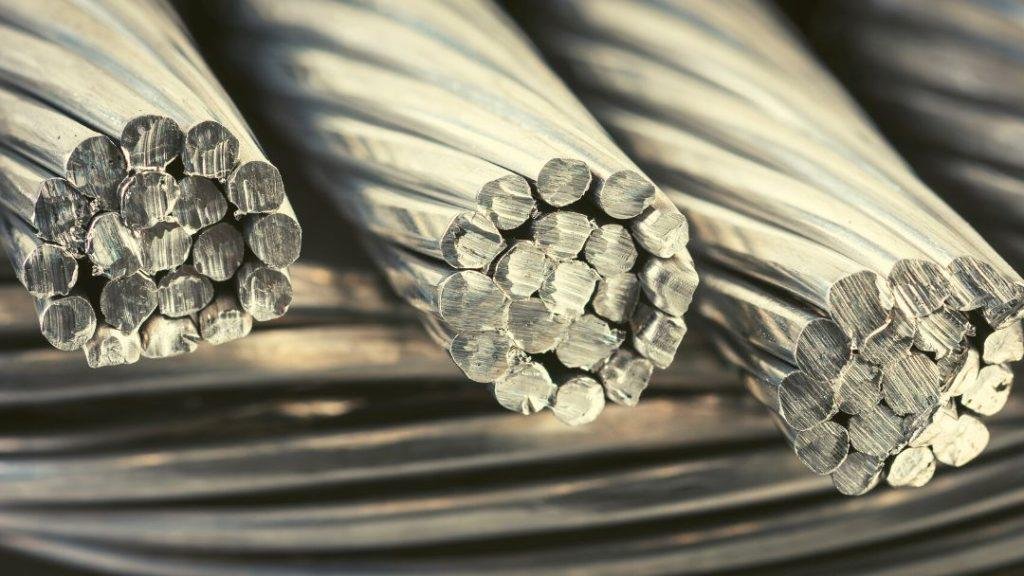
Essential Tools For Cutting Winch Cables
Cutting winch cables requires essential tools such as cable cutters or a grinder fitted with an abrasive cutting disc. These tools ensure clean and efficient cable cuts, allowing for a smooth winching operation.
To successfully cut winch cables, it is important to have the right tools and equipment. Here are the essential tools you will need:
- Safety glasses: Protect your eyes from any debris or metal shards that may fly off during the cutting process.
- Work gloves: Wear sturdy work gloves to protect your hands from sharp cable edges and prevent any potential injuries.
- Angle grinder: An angle grinder with a cutting wheel is an effective tool for cutting winch cables. It provides precise and clean cuts.
- Cutting wheel: Ensure you have a quality cutting wheel specifically designed for cutting through metal cables.
- Tape measure: Use a tape measure to accurately measure the desired length of cable you need to cut.
- Chalk or marker: Mark the cable at the desired cutting point using chalk or a marker so you can make an accurate cut.
- Vice or clamp: Secure the winch cable in a vice or clamp to prevent it from moving or slipping during the cutting process.
- Fire extinguisher: Keep a fire extinguisher nearby in case of any sparks or accidental fire.
Remember to follow proper safety precautions when using these tools to ensure your well-being and achieve accurate results.
Step-By-Step Guide To Cut Winch Cables
Learn how to cut winch cables with this step-by-step guide. Follow the instructions carefully to ensure a safe and effective process.
Preparing The Workspace
- Ensure that you have a clean and well-lit workspace before starting the process of cutting winch cables. This will help you work efficiently and minimize any potential accidents.
- Gather all the necessary tools for the task, including work gloves, safety goggles, measuring tape, and a cable cutter.
- Lay out a protective surface, such as a tarp or cardboard, to protect the surrounding area from damage and debris.
Measuring And Marking The Desired Length
- Begin by determining the desired length of the winch cable. Measure it carefully using a measuring tape, ensuring accuracy for a precise cut.
- Mark the desired length on the cable using a permanent marker or a piece of masking tape. This mark will serve as a guide during the cutting process, helping you achieve the correct length.
Selecting The Appropriate Cutting Method
- Depending on the type and thickness of your winch cable, you will need to choose the appropriate cutting method.
- Cable cutter: For smaller winch cables or those made of softer materials, a cable cutter is recommended. Place the cable within the jaws of the cutter and apply strong, even pressure to cut through the cable. Make sure to protect your hands by wearing gloves during this process.
- Power grinder: If you are dealing with thicker winch cables or those made of a tougher material, a power grinder may be necessary. Secure the cable in a vise or clamp, ensuring it is stable and won’t move during cutting. Use the power grinder to carefully cut through the cable, applying constant pressure and taking precautions to avoid overheating.
- Torch cutting: Torch cutting should only be used as a last resort and with extreme caution. It is suitable for very thick and robust winch cables. Ensure you have the necessary expertise and safety equipment before attempting this method.
By following this step-by-step guide, you can confidently cut winch cables to your desired length. Remember to prioritize safety and take all necessary precautions throughout the process. With the right tools and techniques, you can successfully complete this task.
Using A Wire Rope Cutter
Cutting winch cable can be done easily with a wire rope cutter. Simply position the cutter around the cable, apply pressure, and make a clean cut. Ensure safety by using the appropriate equipment and following recommended procedures.
Overview Of Wire Rope Cutters:
- Wire rope cutters are specialized tools designed to cut through winch cables efficiently and safely.
- These cutters are specifically designed for use with wire ropes and have a sturdy construction to withstand the high pressures involved in cutting.
- They are available in various sizes and designs, allowing users to choose the most suitable option based on their specific needs.
- Wire rope cutters eliminate the need for using other tools like saws, which can cause fraying or damage to the cable.
- The cutter’s blades are sharp and capable of cleanly cutting through the cable without leaving any sharp edges behind.
- They are an essential tool for anyone working with winch cables, providing a quick and efficient solution for cutting.
Proper Technique And Usage Tips:
- Before using a wire rope cutter, ensure that the cable is free from any tension or load to prevent accidents and ensure safety.
- Place the cable in a suitable position, making sure it is securely held in place, such as using clamps or a vise.
- Position the wire rope cutter over the desired cutting point on the cable.
- Apply steady pressure on the handles of the cutter to initiate the cutting action.
- Maintain a firm grip on the cutter and continue applying pressure until the cable is cut through completely.
- Always wear appropriate safety gear, including gloves and protective eyewear, while using the cutter to avoid any potential injuries.
- After cutting the cable, inspect the cut end for any sharp burrs or protrusions. If present, use a file or a grinding tool to smoothen the edges.
- Clean and store the wire rope cutter in a suitable location after use, ensuring it is well-maintained for optimal performance in the future.
Remember, wire rope cutters are efficient tools designed specifically for cutting winch cables. By following proper techniques and usage tips, you can ensure safe and accurate cable cutting for your winching needs.
Using A Reciprocating Saw
Cutting winch cable can be made easier with the use of a reciprocating saw. Its powerful and fast cutting action allows for precise and efficient cuts, saving you time and effort. Make sure to follow safety precautions and use the correct blade for the job.
Advantages And Considerations
Using a reciprocating saw:
A reciprocating saw can be a useful tool when it comes to cutting winch cable. It offers certain advantages and considerations that you should keep in mind before using it for this purpose.
Advantages:
- Versatility: A reciprocating saw is a versatile tool that can be used for various cutting tasks, including cutting winch cable. It is particularly effective for cutting through thick and tough materials.
- Speed: One of the main advantages of using a reciprocating saw is its speed. It can quickly cut through winch cable, making the process faster and more efficient.
- Accessibility: Reciprocating saws come in different sizes and shapes, allowing for easy access to difficult-to-reach areas. This can be especially helpful when cutting winch cable in tight spaces.
Considerations:
- Safety: Safety should be your top priority when using a reciprocating saw. Always wear protective gear, such as safety goggles and gloves, to minimize the risk of injury. Additionally, ensure that the area is clear of any obstacles or hazards that could interfere with the cutting process.
- Cutting technique: It is important to use the proper technique when cutting winch cable with a reciprocating saw. Start by marking the cutting line and securing the cable. Hold the saw firmly with both hands and slowly guide it along the marked line. Applying too much pressure or using excessive force can lead to blade breakage or damage to the cable.
- Blade selection: Choosing the right blade is crucial for achieving clean and precise cuts. Opt for a blade specifically designed for cutting metal or steel. Consider the thickness and type of winch cable you are working with to select the appropriate blade.
- Heat generation: Reciprocal saws generate heat during operation, especially when cutting through thick materials. To avoid overheating and potential damage to the cable, periodically stop cutting to allow the blade and cable to cool down.
Remember, using a reciprocating saw to cut winch cable can be an effective method, but it requires caution, proper technique, and the right blade selection. Prioritize safety and follow the recommended guidelines to ensure a successful and efficient cutting process.
Using A Grinder
Use a grinder to cut winch cable quickly and effectively. This powerful tool allows for precise cuts, making it easier to remove damaged sections and prepare the cable for repair or replacement. With proper safety measures, you can confidently tackle this task with a grinder.
Overview Of Using Grinders For Winch Cables
Grinders are a powerful tool that can be used to effectively cut winch cables. When it comes to cutting winch cables, using a grinder can offer several advantages. The grinder provides precision and control, making it easier to achieve a clean and smooth cut.
Additionally, grinders are versatile and can be used for cutting different types of winch cables, including steel and synthetic.
Tips For Safe And Precise Cutting
To ensure safe and precise cutting of winch cables using a grinder, it is important to follow these tips:
- Choose the right grinder disc: Select a grinder disc suitable for cutting winch cables. Diamond discs are commonly used for cutting steel cables, while abrasive discs work well for synthetic cables.
- Wear appropriate safety gear: Always wear safety goggles, gloves, and a face mask to protect yourself from flying sparks, debris, and dust generated during the cutting process.
- Secure the winch cable: Make sure the winch cable is securely clamped or fixed in place to prevent it from moving or slipping during cutting.
- Mark the cutting point: Use a marker or tape to mark the precise cutting point on the winch cable. This will help you achieve an accurate cut and prevent any unnecessary damage.
- Start the grinder: Before starting the cutting process, ensure that the grinder is properly set up and functioning correctly. Check the disc for any damage or wear.
- Apply consistent pressure: Apply steady and consistent pressure on the grinder while cutting the winch cable. Avoid applying excessive force, as it may result in an uneven or jagged cut.
- Cut gradually: Start cutting the winch cable from the marked point and work your way through it gradually. Avoid rushing the process to ensure a clean and precise cut.
- Cool down the cable: After cutting, allow the winch cable to cool down before handling it. This will prevent any accidental burns or injuries caused by a hot cable.
By following these tips, you can effectively and safely cut winch cables using a grinder. Remember to prioritize safety and take necessary precautions to avoid any accidents or injuries.
Best Practices For Smooth And Safe Cable Cutting
Cutting winch cables requires following best practices to ensure the process is smooth and safe. By adhering to guidelines such as using the appropriate tools, wearing protective gear, and avoiding common mistakes, you can successfully cut winch cables without any issues.
Regular maintenance and inspection:
- Ensure regular inspection of the winch cable to identify any signs of wear or damage.
- Conduct visual checks for fraying strands, kinks, or rust.
- Check the winch drum for any signs of distortion or rough edges that may cause damage to the cable.
- Regularly clean the cable with a mild detergent and a soft brush to remove dirt, debris, and corrosive substances.
- Lubricate the cable with a recommended winch cable lubricant to prevent rust and promote smooth operation.
- Perform load testing to ensure the winch cable’s strength and integrity. Replace any worn or damaged cables promptly.
Proper storage and handling of winch cables:
- Assign a dedicated space for storing winch cables, away from moisture and extreme temperatures.
- Coil the cable neatly and avoid kinks or tangles that could weaken the cable structure.
- Store the cable in a vertical position to prevent unnecessary strain on the strands.
- Use protective covers or sleeves to shield the cable from uv rays, moisture, and abrasive surfaces.
- When handling winch cables, wear suitable gloves to protect your hands from sharp edges or wire splinters.
- Avoid dragging or dragging the cable across rough surfaces to prevent damage.
Remember, neglecting regular maintenance and improper storage can compromise the safety and performance of your winch cable. By following these best practices, you can extend the lifespan of your cable and ensure smooth and safe cutting operations.
Proper Disposal Of Cut Winch Cables
To ensure the proper disposal of cut winch cables, follow these easy steps: 1. Begin by disconnecting the cable from the winch drum. 2. Use a sharp cutting tool to cleanly cut the cable, ensuring no frayed edges. 3. Dispose of the cable in a designated recycling or waste facility for proper handling.
It’s important to properly dispose of cut winch cables to minimize their impact on the environment. Here are some considerations and recycling options to help you responsibly dispose of your cut winch cables:
Environmental Considerations
- Winch cables contain materials that can be harmful to the environment if not disposed of properly.
- These materials can leach into the soil and water, posing a threat to plants, animals, and humans.
- Discarding winch cables in the regular trash can lead to them ending up in landfills, where they can take hundreds of years to decompose.
Recycling Options And Guidelines
- Recycling is an ideal way to dispose of cut winch cables in an environmentally friendly manner.
- Some recycling facilities accept winch cables, but it’s important to check with your local recycling centers to see if they have specific guidelines for accepting this type of item.
- When preparing your cut winch cables for recycling, ensure they are clean and free from any contaminants, such as dirt or grease.
- If possible, separate any metal parts from the cable, as these can often be recycled separately.
- Consider contacting scrap metal facilities as they may be interested in buying or accepting your cut winch cables for recycling purposes.
- If recycling is not an option in your area, contact your local waste management facility to inquire about any special disposal instructions for winch cables.
By following these environmental considerations and recycling options and guidelines, you can help minimize the impact of cut winch cables on the environment while promoting responsible waste management practices. Remember, proper disposal is crucial to protect our planet and ensure the well-being of future generations.
Frequently Asked Questions Of How To Cut Winch Cable
How Do You Cut A Cable Without A Wire Cutter?
To cut a cable without a wire cutter, you can use a few alternative methods. One option is to use a sharp knife or razor blade to carefully slice through the cable. Another method is to use a hacksaw or a reciprocating saw with a metal-cutting blade.
It’s important to work slowly and steadily to avoid any accidents. Additionally, you can try using a pair of sharp scissors, but this may be more challenging depending on the thickness and toughness of the cable. Remember to exercise caution and wear protective gloves to prevent any injuries.
How Do You Cut A Winch Rope?
To cut a winch rope, follow these steps: 1. Locate a clean, flat surface to work on. 2. Use a sharp knife or scissors to make a clean, straight cut on the rope. 3. Ensure you are cutting the rope at its desired length.
4. Be cautious not to damage or fray the remaining rope fibers during the cutting process. Cutting a winch rope requires precision and care to maintain its integrity. Remember to always wear protective gloves and eyewear for safety.
How Do You Cut A Throttle Cable Without Fraying It?
To cut a throttle cable without fraying it, follow these steps: 1. Start by measuring and marking the desired length of the cable. 2. Use sharp cable cutters to make a clean and precise cut on the marked spot. 3. To prevent fraying, immediately apply a small amount of heat to the cut end using a lighter or heat gun.
4. Be careful not to melt or damage the cable, but ensure that the heat is sufficient to seal and smoothen the cut end. 5. Allow the cable to cool down before using it. 6. Remember to cover the cut end with a protective sleeve or wrap it with duct tape to prevent any future fraying.
7. Follow these steps carefully to cut a throttle cable without fraying it.
How Do You Cut A Heavy Gauge Cable?
To cut a heavy gauge cable, you will need a few tools and precautions. First, put on safety gloves and protective eyewear. Then, using a wire cutter or cable cutter, position the blades around the cable to be cut. Squeeze the handles firmly to create enough pressure to cut through the cable.
If the cable is too thick for the cutter, you may need to use a hacksaw or a reciprocating saw instead. Ensure that the cable is securely held in place before making any cuts to prevent it from whipping back and causing injury.
After cutting through the cable, inspect the ends to confirm a clean cut. Remember, if you are uncertain or uncomfortable performing this task, it’s always best to consult a professional to avoid accidents or damage.
Conclusion
Cutting a winch cable is a task that requires careful consideration and adherence to safety guidelines. By following the steps outlined in this blog post, you can ensure a smooth and efficient cutting process. Remember to gather the necessary tools and protective gear before you begin, and always exercise caution when working with tensioned cables.
Take the time to properly prep the winch and secure it in place to prevent any accidents. Additionally, it’s important to have a plan for disposing of the cut cable safely and responsibly. By following these tips, you’ll be able to cut a winch cable with confidence and ease, enabling you to continue using your winch for all your heavy-duty needs.

